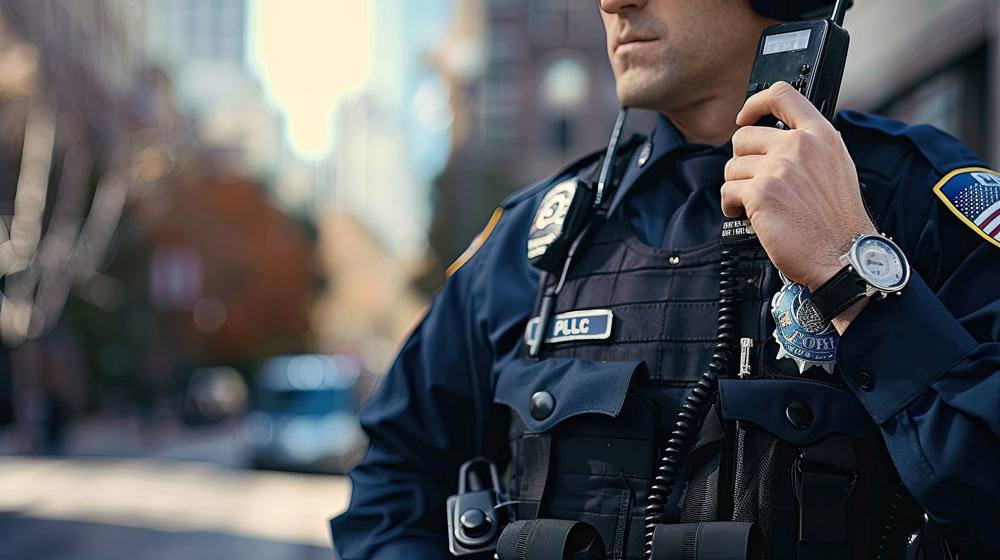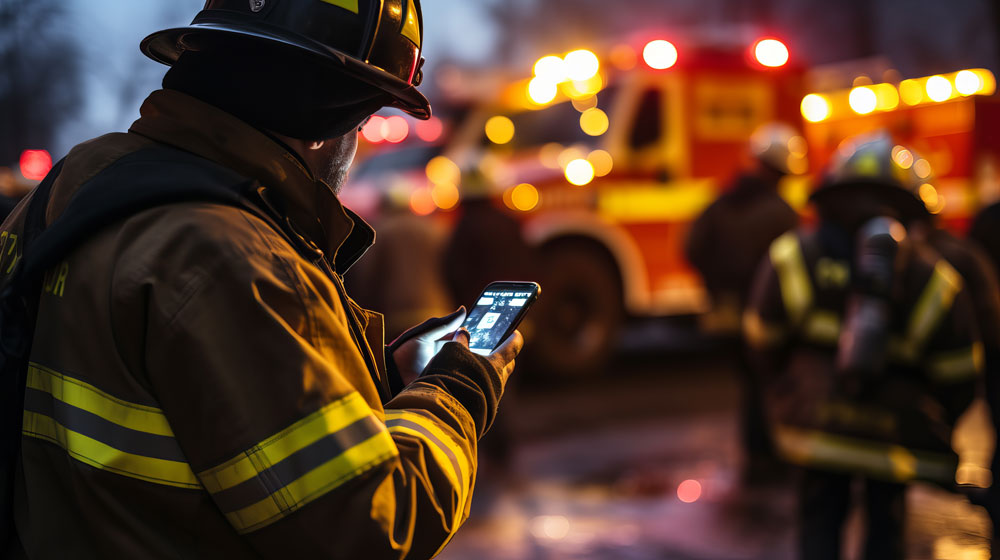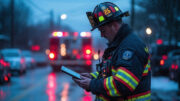
Whenever you see law enforcement, fire, and EMS communicating on site using ruggedized smartphones and tablets, chances are that they’re using FirstNet.
FirstNet is the nationwide public safety communications network created with and exclusively for public safety. This means that U.S. police, fire, and EMS users — of which there are 7 million to date — can always get through, because they don’t have to compete with public callers at any time. Their calls, texts, and data transmissions are carried over radio spectrum that Congress reserved for public safety traffic back in 2012. This capability saves lives and keeps communities safe.
FirstNet is managed by the First Responder Network Authority, better known as the FirstNet Authority. It is an independent agency within the U.S. Department of Commerce’s National Telecommunications and Information Administration (NTIA).
Why FirstNet Exists
The FirstNet public safety network is a direct response to the lives lost during the September 11, 2001 terrorist attack on the World Trade Center. “One of the key findings in the 9/11 Commission Report was that communications was very poor and that first responders could not talk to each other, which led to people dying when the Twin Towers collapsed,” said Chief Richard Carrizzo (retired) of the Southern Platte Fire Protection District in Parkville, Missouri. “Congress heeded this lesson by creating the FirstNet Authority in 2012, to build a nationwide cellular network that all first responders could rely on to talk to each other.”
AT&T won the right to manage FirstNet’s emergency communications after the wireless carrier won an open and fair competitive bidding process.
“FirstNet is a public-private partnership between the FirstNet Authority (the federal government) and AT&T (the private sector),” Chief Carrizzo explained. “AT&T does not own FirstNet’s radio spectrum. It merely manages it on FirstNet’s behalf, and with the FirstNet Authority’s permission.”

Since its inception, FirstNet’s traffic has been managed through AT&T’s 4G LTE Long Term Evolution) network infrastructure. FirstNet is now being upgraded to work over 5G, whose faster network speeds can support more advanced wireless broadband applications for first responders.
The genius of FirstNet is that it is not handcuffed to any specific technology made by one company — a painful lesson that was learned through the tragedy of 9/11. As technology advances through 5G into 6G and beyond, the FirstNet Authority can choose whichever new tech serves first responders and the public best. This includes artificial intelligence (AI), which is now being used to answer non-emergency calls at 911 centers.
How FirstNet Works for First Responders
FirstNet is fundamentally a cellular telephone network reserved for first responders. To access it, participating police, fire, and EMS agencies pay a monthly subscription fee just like any mobile customer.
Because FirstNet is not open to the public, FirstNet users buy special ‘FirstNet black’ SIM cards from AT&T to access the network.
Benefits of FirstNet for Public Safety
Three key lessons were learned from the 9/11 attack at the World Trade Center and the Pentagon.
First, first responders from different police, fire, and EMS agencies need to be able to talk to each other at all times. Second, the number of signals during any incident scene cannot be allowed to cause ‘traffic jams’ that overwhelm the network. Third, the sharing of vital information must never be delayed.
All three of these problems occurred during 9/11. This is why Congress created FirstNet to fix them..
Today, all FirstNet users can talk to each other no matter what agency they’re with, and which smartphones and tablets they use. Second, “FirstNet is a dedicated network built to meet public safety needs, that only admits public safety users, avoiding traffic jams during manmade and natural disasters,” said Chief Carrizzo. “Third, the first two factors ensure that vital information being shared over FirstNet is never delayed.”
FirstNet is the nationwide public safety communications network created with and exclusively for public safety.
FirstNet is a direct response to the lives lost during the September 11, 2001 terrorist attack.
The FirstNet Authority can choose whichever new tech serves first responders and the public best.
All FirstNet users can talk to each other no matter what.
FirstNet works.
Besides these benefits, the fact that first responder agencies pay for FirstNet like any commercial mobile service helps keep their costs low and predictable. Belonging to FirstNet also protects these agencies from spending millions of dollars to build, maintain, and replace conventional land mobile radio networks.
To keep first responders connected when disaster wipes out their cellphone towers, FirstNet offers Compact Rapid Deployable (CRD) satellite-connected FirstNet cell towers and internet access points on trailers, and mini-CRDs in portable carrying cases. These units can also be configured to provide public access, as required.
Who is Eligible for FirstNet?
As stated above, FirstNet is open to first responder agencies such as police, fire, and EMS. However, public utilities, tow truck companies, National Guard members, and others who assist public safety can also be certified as secondary users to join FirstNet. Finding out if you qualify is as simple as going to a local AT&T store.
“If you have a tornado that rips through town, you need everyone who will respond to be able to talk to each other,” Chief Carrizzo said. “This is why FirstNet admits extended primary members. The goal is to make integrated response and recovery operations as seamless and simple as possible.”
Future of FirstNet and Public Safety Communications
When Congress created the FirstNet Authority in 2012, they built a 15-year review into that law. The time for ’reauthorization’ is now approaching. First responders and the Public Safety Broadband Telecommunications Association (PSBTA) are urging Americans to tell their Representatives and Senators to reauthorize FirstNet permanently, because FirstNet works.
“Congress only put in this time limit because FirstNet was an unproven concept,” said Michael Barnbeck, retired Las Vegas police supervisor and PSBTA Deputy Executive Director. “We can save everybody time and money by having Congress reauthorize the FirstNet Authority for good, because FirstNet is fulfilling its promises.”



Be the first to comment on "What is FirstNet and How Does It Work?"